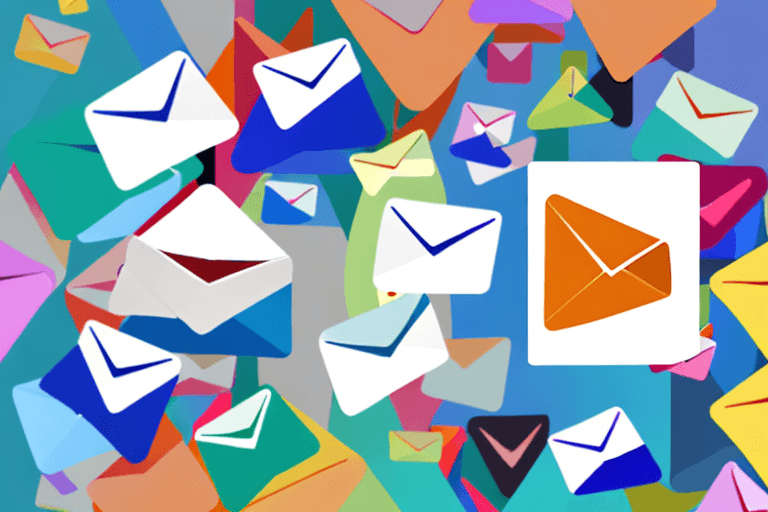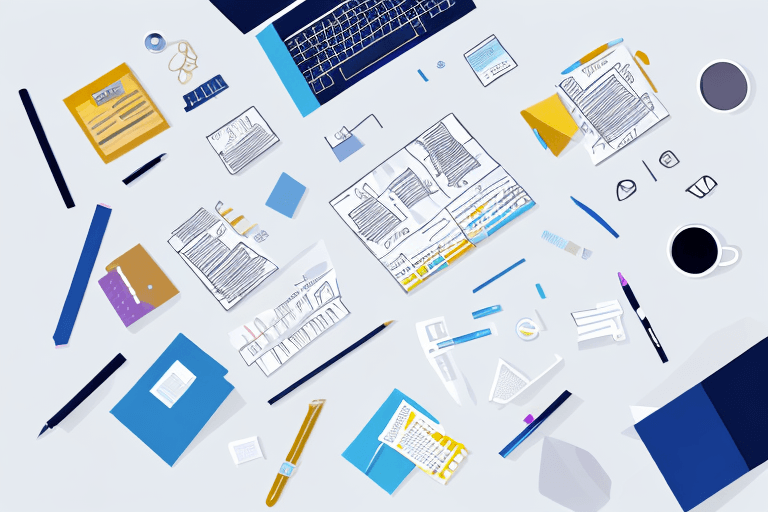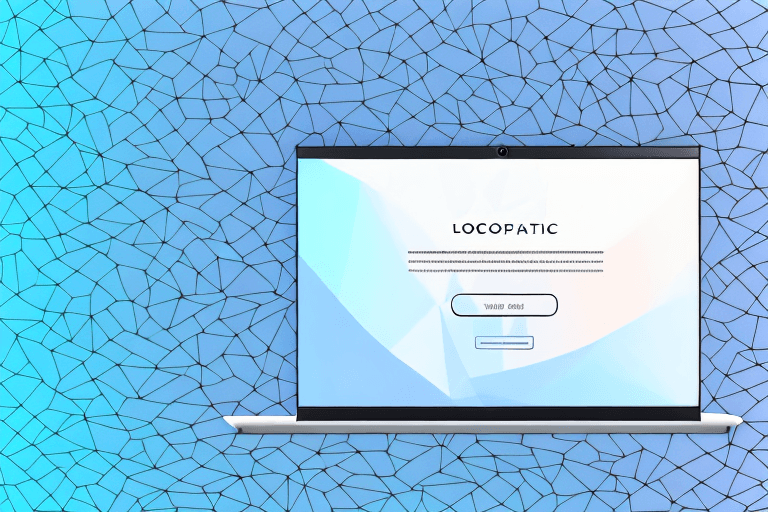In today's fast-paced business world, showing appreciation and gratitude can go a long way in developing strong and long-lasting professional relationships. And one of the simplest yet most effective ways to show your appreciation is by sending a thank-you email. But what makes a thank-you email effective? How can you make sure that your gratitude comes across in a sincere and impactful way? In this article, we'll explore the key elements of an effective thank-you email and provide you with seven ready-to-use templates that you can customize and send out to your colleagues, clients, or business partners.
The Importance of Showing Appreciation in Emails
Before we dive into the templates, let's take a moment to understand why showing appreciation in emails can be so powerful. First and foremost, it helps to strengthen professional relationships. When you take the time to acknowledge someone's effort or contribution, you're letting them know that their work is valued and that you appreciate their efforts. This can go a long way in fostering trust and respect in a working relationship.
Strengthening Professional Relationships
When you show gratitude towards your colleagues or business partners, you're also demonstrating that you're invested in the relationship. This can lead to more open communication, better collaboration, and a shared sense of purpose. Ultimately, it can help you achieve your business objectives more efficiently.
For example, imagine you are working on a project with a colleague who has been consistently putting in extra effort to ensure the project's success. By sending them an email expressing your appreciation, you're not only acknowledging their hard work but also strengthening your professional relationship. This can lead to a more productive and enjoyable work environment, as well as increased motivation and commitment to the project.
Encouraging Positive Behavior
Another benefit of showing appreciation in emails is that it encourages positive behavior. When people feel validated and appreciated, they're more likely to continue their good work and go the extra mile when required. This can be especially helpful when working with remote teams or when you don't have the opportunity to thank someone in person.
For instance, let's say you have a team member who consistently meets deadlines and produces high-quality work. By sending them an email expressing your gratitude and acknowledging their efforts, you're reinforcing their positive behavior and encouraging them to continue to excel in their work. This can lead to increased productivity and better results for your team and organization.
Demonstrating Gratitude and Empathy
Finally, sending a thank-you email is a powerful way to demonstrate your gratitude and empathy. In a world where stress and burnout can be prevalent, taking the time to acknowledge someone's effort and show your appreciation can be a much-needed morale boost. It can also help to foster a positive and supportive work culture where people feel valued and respected.
For example, imagine a team member who has been working long hours and going above and beyond to meet a tight deadline. By sending them an email expressing your gratitude and acknowledging their hard work, you're demonstrating empathy and showing that you recognize and appreciate their efforts. This can lead to increased job satisfaction, motivation, and a positive work culture.
In conclusion, showing appreciation in emails is a simple yet powerful way to strengthen professional relationships, encourage positive behavior, and demonstrate gratitude and empathy. By taking the time to acknowledge someone's effort or contribution, you're not only making them feel valued but also contributing to a more productive and positive work environment.
Key Elements of an Effective Thank You Email
Now that we've established why showing appreciation is important let's take a closer look at what makes a thank-you email effective. Here are the key elements to keep in mind:
Personalization
A great thank-you email should feel personal and tailored to the recipient. Use their name, acknowledge their specific contribution, and make it clear that you're writing to them specifically. This will help the email feel more genuine and less like a generic message.
For example, if you're thanking a colleague for their help on a project, you might mention a specific task they completed that was particularly helpful. Or if you're thanking a client for their business, you could mention a specific project or product they were involved in that you appreciated working on together.
Specificity
Be specific about what you're thanking the recipient for. This will help them understand exactly what they did that you're appreciating. It can also make the email feel more sincere and thoughtful.
For instance, if you're thanking a mentor for their guidance, you could mention a specific piece of advice they gave you that was particularly helpful. Or if you're thanking a customer for their feedback, you could mention a specific suggestion they made that you plan to implement.
Timeliness
Send your thank-you email as soon as possible after the event or action you're thanking for. This will help keep the positive feelings fresh and reinforce the impact of what they did.
For example, if you're thanking a colleague for their help on a project, you might send the email the same day the project was completed. Or if you're thanking a client for their business, you could send the email shortly after the project or sale was finalized.
Sincerity
Finally, make sure your thank-you email is sincere. Avoid coming across as insincere or overly formal. Use conversational language, express genuine gratitude, and try to make a personal connection where possible.
For instance, if you're thanking a colleague for their help on a project, you could mention how much easier their help made the project for you and how much you enjoyed working with them. Or if you're thanking a customer for their business, you could mention how much you appreciate their loyalty and how you look forward to continuing to work together in the future.
Remember, a sincere thank-you email can go a long way in building and maintaining positive relationships, both personally and professionally.
Template 1: Thank You for a Job Interview
If you've recently had a job interview, sending a thank-you email can be a great way to reinforce your interest in the position and set yourself apart from other candidates. Here's a template you can use:
- Dear [Interviewer's Name],
- I want to take a moment to thank you for taking the time to interview me for the [Job Title] position at [Company Name]. It was a pleasure to meet you and to learn more about the company's goals and strategies.
- I'm particularly interested in the role because of [specific reason]. I'm confident that my skills and experience in [relevant experience] make me a strong candidate for the position.
- Thank you again for your time and consideration. I look forward to hearing back from you.
- Best regards,
- [Your Name]
Expressing Gratitude for the Opportunity
Start by thanking the interviewer for their time and for the opportunity to learn more about the role and the company. This sets a positive tone and reinforces your interest in the position.
It's important to remember that the interview process can be a time-consuming and demanding experience for both the candidate and the interviewer. By sending a thank-you email, you're not only expressing your gratitude for the opportunity but also acknowledging the effort that the interviewer put into the process.
Reinforcing Your Interest in the Position
Next, highlight why you're particularly interested in the role and how your skills and experience make you a strong fit. This can help to differentiate you from other candidates and reinforce your value.
When you're expressing your interest in the position, be specific about what it is that appeals to you. Is it the company culture? The opportunity for growth and development? The chance to work on exciting projects? Whatever it is, make sure you communicate it clearly.
Additionally, make sure you highlight how your skills and experience align with the needs of the position. You want to show the interviewer that you're not only interested in the role but also qualified to excel in it.
Overall, a thank-you email is a great way to leave a positive impression after a job interview. By expressing your gratitude and reinforcing your interest in the position, you can set yourself apart from other candidates and increase your chances of landing the job.
Template 2: Thank You for a Business Meeting
If you've recently had a business meeting with a client or colleague, sending a thank-you email can help to reinforce the key takeaways and keep the conversation going. Here's a template you can use:
- Dear [Recipient's Name],
- Thank you for taking the time to meet with me today to discuss [topic]. It was great to get your insights and thoughts on [specific conversation points].
- I particularly appreciated your input on [specific point] and I think that [related action or next steps].
- Thank you again for your time and for sharing your expertise. I look forward to continuing the conversation and exploring new ways to collaborate in the future.
- Best regards,
- [Your Name]
Acknowledging the Time and Effort
Start by thanking the recipient for taking the time to meet with you and acknowledge the effort they put into the conversation. This can help to set a positive tone and show that you value their contribution.
Highlighting Key Takeaways
Next, summarize the key takeaways from the conversation and reinforce any actionable next steps or follow-up items. This can help to ensure that the conversation stays on track and that everyone is on the same page.
Closing Thoughts
Remember, showing appreciation and gratitude doesn't have to be complicated or time-consuming. With these ready-to-use email templates, you can easily express your gratitude and reinforce your professional relationships. Keep the key elements in mind, personalize your message, and remember to always be sincere and specific in your thanks. Your colleagues, clients, and partners will appreciate the thoughtfulness and professionalism of your approach.




